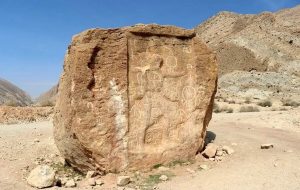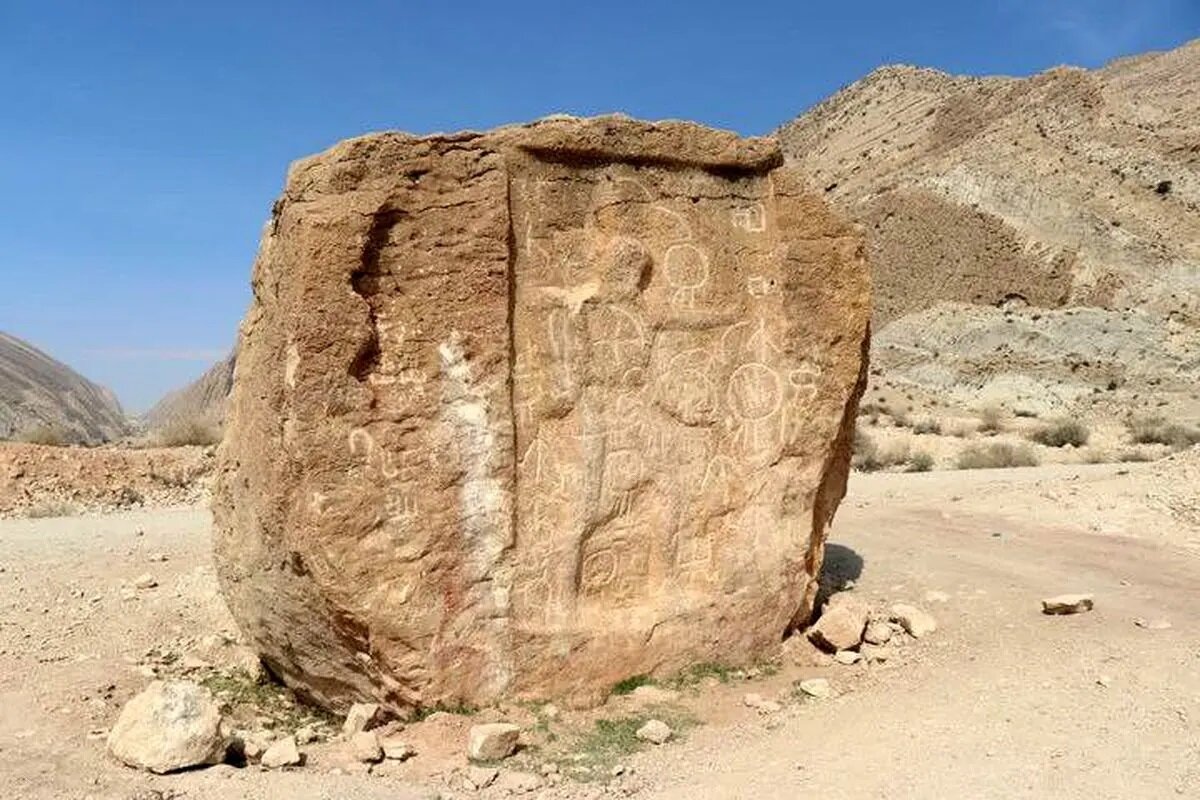Fars province’s sole Parthian stone relief to undergo restoration
TEHRAN – The only known Parthian-era stone relief in Iran’s Fars province is set to undergo restoration and structural reinforcement to preserve its historical significance, according to local cultural heritage authorities. The relief, which depicts a Parthian soldier in the act of shooting an arrow with a quiver strapped to his back, is the sole


TEHRAN – The only known Parthian-era stone relief in Iran’s Fars province is set to undergo restoration and structural reinforcement to preserve its historical significance, according to local cultural heritage authorities.
The relief, which depicts a Parthian soldier in the act of shooting an arrow with a quiver strapped to his back, is the sole surviving Parthian carving in the region.
The relatively massive relief is located on a rock face overlooking the city of Qir, within the breathtaking archaeological landscape of Fars province, which is home to renowned ancient sites such as Persepolis, Pasargadae, and Naqsh-e Rostam.
On Wednesday, Mohammad Sabet-Eqlidi, the provincial tourism chief, stated that plans for the conservation and stabilization of the relief are in progress. “This historic carving has endured significant deterioration over the centuries, including surface delamination, fractures, and cracks. Restoration efforts are a top priority, and preservation measures will begin soon,” Sabet-Eqlidi explained.
Reports earlier this month highlighted the deteriorating condition of the relief, which has suffered structural cracks and partial collapse due to years of neglect and exposure to environmental factors. The relief, measuring about 1.20 by 2.40 meters, is thought to offer valuable insights into Parthian-era attire, weaponry, and craftsmanship.
Experts have identified environmental factors, such as temperature fluctuations and humidity, as major contributors to the relief’s weathering. “Severe horizontal cracks in the upper sections indicate intense weathering, leading to the layering and weakening of the stone,” ILNA quoted Manijeh Hadian-Dehkordi, a former director of the Research Institute of Cultural Heritage.
“Its proximity to a roadway and human activities further exacerbate its vulnerability.”
According to ILNA, Maliheh Mehdi-Abadi, a senior restoration expert, has recently stressed the need for immediate measures to secure fallen fragments and conduct a thorough damage assessment. “It is crucial to preserve the dislodged pieces for use in future restoration projects,” she remarked.
Carved into a mountainside near Qir, approximately 20 kilometers from Firouzabad, the relief holds both artistic and historical value. The relic was inscribed on Iran’s National Heritage List in 1975 under registration number 939.
Glimpses of Parthian era
The Parthian Empire, also known as the Arsacid Empire, was a major Iranian political and cultural power centered in ancient Iran from 247 BCE to 224 CE. Its name derives from its founder, Arsaces I, who led the Parni tribe in conquering Parthia, a northeastern region of Iran. At the time, Parthia was a satrapy (province) under Andragoras, a rebel against the Seleucid Empire.
Under Mithridates I (r. c. 171–132 BC), the empire significantly expanded, seizing Media and Mesopotamia from the Seleucids. At its zenith, the Parthian Empire extended from the northern Euphrates River (modern central-eastern Turkey) to present-day Afghanistan and western Pakistan. Positioned along the Silk Road, the empire thrived as a hub for trade and commerce, connecting the Roman Empire in the Mediterranean to the Han dynasty in China.
The Parthians assimilated various elements of the diverse cultures within their empire, which included Persian, Hellenistic, and regional influences. Initially, the Arsacid court adopted many aspects of Greek culture but gradually saw a revival of Iranian traditions. Parthian rulers adopted the title “King of Kings”, asserting their heritage from the Achaemenid Empire. Unlike the Achaemenids, who governed through centrally appointed satraps, the Parthians often allowed local kings to serve as vassals. The Arsacids did appoint a few satraps, particularly outside Iran, but these territories were smaller and less autonomous compared to the Achaemenid model. As the empire expanded, its central government shifted from Nisa to Ctesiphon, near modern Baghdad, though other cities also served as capitals.
The Parthians initially faced threats from the Seleucids in the west and the Scythians in the north. However, as they expanded, conflicts arose with the Kingdom of Armenia and the Roman Republic. Rome and Parthia clashed frequently over control of Armenia, seeking to establish it as a tributary state. The Parthians achieved notable victories, such as the destruction of Marcus Licinius Crassus’ army at the Battle of Carrhae in 53 BCE and the capture of much of the Levant in 40–39 BC. However, Roman forces, under leaders like Mark Antony, counterattacked. Over the following centuries, the Roman-Parthian Wars saw emperors invading Mesopotamia and briefly capturing Seleucia and Ctesiphon.
Internal conflicts among Parthian claimants to the throne ultimately undermined the empire’s stability. This instability proved more damaging than foreign invasions. The Parthian Empire came to an end in 224 CE when Ardashir I, ruler of Istakhr in Persis, rebelled against the Arsacids and defeated the last Parthian king, Artabanus IV.
Ardashir established the Sasanian Empire, which dominated Iran and the Near East until the Muslim conquests of the 7th century CE.
AM
